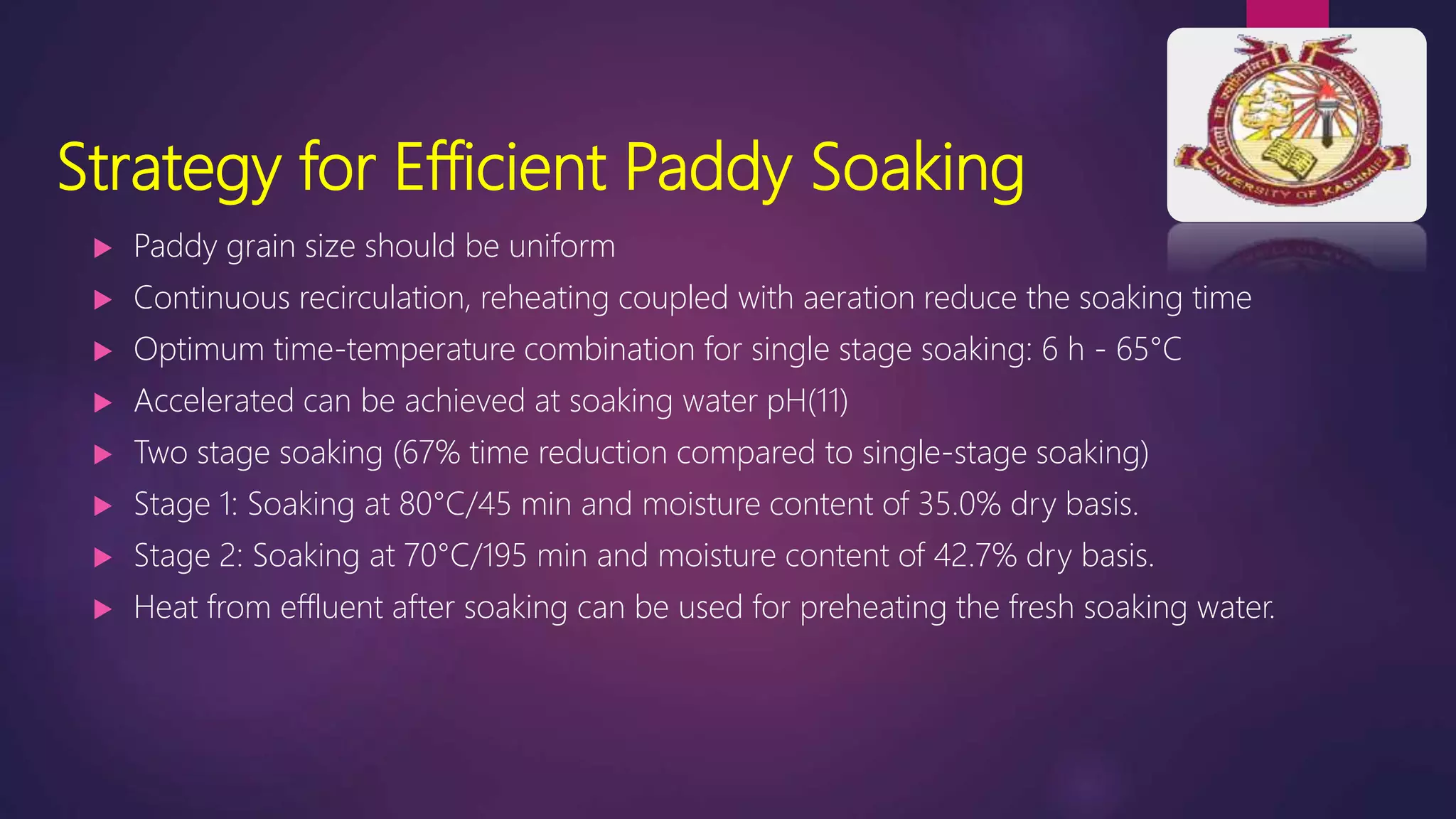The document discusses the parboiling process of rice, which involves precooking paddy to gelatinize starch while preserving its structure and nutrients. It outlines the steps of parboiling, including pre-steaming, soaking, post-steaming, and drying, along with the associated energy requirements and efficiency strategies. Parboiling not only reduces breakage and nutrient loss but also enhances rice qualities, though it requires more time and energy for processing.


















